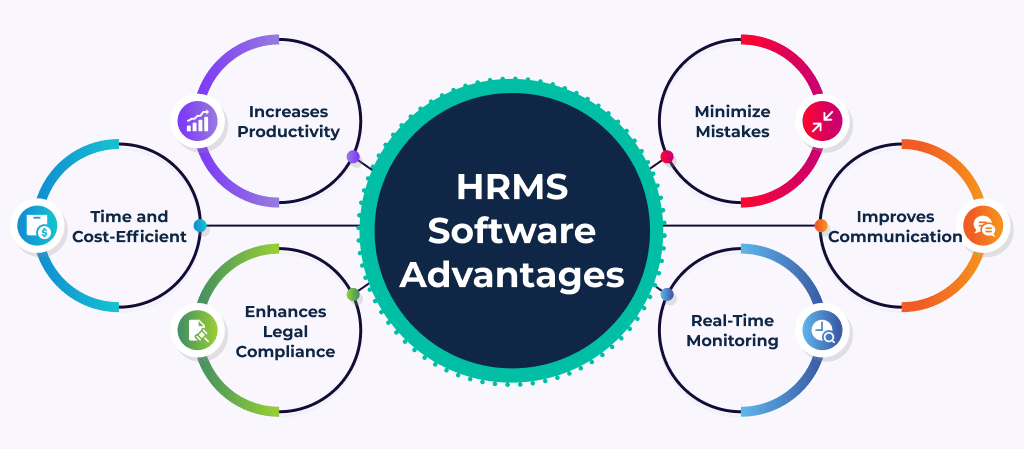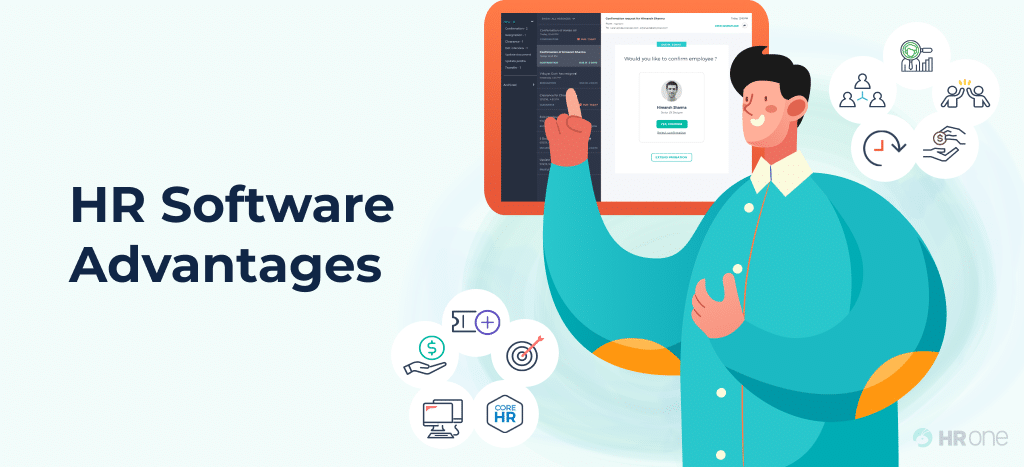university.nakul@gmail.com | Posted on | Education
How can we use HR software?
0
4713 Views
In today’s fast-paced business environment, leveraging HR software has become essential for effective human resource management. As organizations grow and evolve, the need for efficient systems to manage human capital becomes increasingly critical. With the right tools, organizations can streamline processes, enhance employee engagement, and ensure compliance with regulations. This blog post will explore how HR software can be utilized effectively, the benefits it offers, key features to look for, implementation strategies, and real-world success stories.

Understanding HR Software
What is HR Software?
HR software encompasses various digital tools designed to streamline and automate human resource processes. These solutions can range from simple payroll systems to comprehensive human capital management platforms that cover everything from recruitment to performance evaluation. The primary goal of HR software is to improve the efficiency of HR functions while providing valuable insights into workforce management.
Types of HR Software
There are several types of HR software available, each serving different functions within the human resources domain:
- Payroll Systems: These systems automate payroll calculations, tax deductions, and compliance reporting. They ensure that employees are paid accurately and on time while also managing deductions for benefits and taxes.
- Applicant Tracking Systems (ATS): ATS solutions help manage the recruitment process by tracking applicants and facilitating communication between candidates and hiring managers. They streamline job postings, resume screening, and interview scheduling.
- Performance Management Tools: These tools assist organizations in setting goals, conducting evaluations, and providing feedback. They often include features such as 360-degree feedback, performance reviews, and employee development plans.
- Employee Onboarding Solutions: Onboarding software streamlines the process for new hires, ensuring they have a smooth transition into the company. These solutions often include document management, training schedules, and integration with other HR systems.
- Learning Management Systems (LMS): LMS platforms provide training and development resources for employees. They facilitate online courses, track progress, and assess skills development.
- Time and Attendance Systems: These systems track employee working hours, leave requests, and attendance patterns. They help ensure accurate payroll processing and compliance with labor laws.
Benefits of Using HR Software
1. Improved Efficiency
One of the most significant advantages of using HR software is improved efficiency. By automating repetitive tasks—such as data entry, payroll processing, and benefits administration—HR professionals can focus on more strategic initiatives that drive organizational success. For instance:
- Automation of Routine Tasks: Tasks like generating reports or processing payroll can be automated to save time and reduce errors.
- Streamlined Communication: Many HR software solutions include built-in communication tools that facilitate collaboration between employees and departments.
- Faster Decision-Making: With real-time data at their fingertips, HR teams can make informed decisions quickly rather than relying on outdated information.
2. Enhanced Data Management
HR software enhances data management by centralizing employee information in a secure database. This centralized approach offers several benefits:
- Easy Access to Information: HR personnel can quickly access employee records, performance metrics, and compliance documents without sifting through paper files or disparate systems.
- Improved Data Accuracy: Automated data entry reduces the likelihood of human error, ensuring that information is accurate and up-to-date.
- Data Analytics Capabilities: Many HR software solutions come equipped with analytics tools that allow organizations to analyze workforce trends and make data-driven decisions.
3. Better Compliance
Compliance with labor laws and regulations is a critical aspect of human resource management. Many HR software solutions include features that help organizations maintain compliance:
- Automated Alerts: Compliance-related deadlines—such as tax filings or benefit enrollment periods—can be tracked automatically with alerts sent to relevant personnel.
- Document Management: Secure storage of important documents ensures that organizations can easily access records during audits or inspections.
- Reporting Features: Built-in reporting capabilities enable organizations to generate compliance reports quickly and efficiently.
4. Enhanced Employee Experience
HR software can significantly improve the employee experience by providing self-service options for various HR tasks:
- Self-Service Portals: Employees can access their personal information, request time off, or enroll in benefits through user-friendly portals without needing to contact HR directly.
- Performance Feedback Tools: Employees can receive ongoing feedback through performance management tools that facilitate regular check-ins and goal-setting discussions with managers.
- Training Resources: Learning management systems provide employees with access to training materials and courses that support their professional development.
Key Features to Look For
When selecting an HR software solution for your organization, it's essential to consider various key features that will enhance its effectiveness:
1. User-Friendly Interface
A user-friendly interface is crucial for ensuring that all employees can navigate the software with ease. An intuitive design reduces the learning curve and encourages adoption across the organization. Look for:
- Simple Navigation: Clear menus and easy-to-find features make it easier for users to accomplish tasks without frustration.
- Mobile Accessibility: A mobile-friendly design allows employees to access the system from anywhere at any time.
2. Customization Options
Customizable features allow businesses to tailor the software to meet their specific needs and workflows. This flexibility is key to maximizing effectiveness:
- Configurable Workflows: Organizations should be able to adjust workflows based on their unique processes rather than adapting their processes to fit a rigid system.
- Branding Options: Customizing the appearance of the software—such as adding logos or color schemes—can enhance user engagement by creating a familiar environment.
3. Integration Capabilities
The ability to integrate with other business systems enhances the overall functionality of HR software. Seamless connections with tools like accounting software or project management platforms create a more cohesive operational environment:
- API Access: Look for solutions that offer robust APIs (Application Programming Interfaces) for easy integration with existing systems.
- Third-Party Integrations: Many organizations use multiple software solutions; ensure your chosen HR software can integrate smoothly with these tools.

How to Implement HR Software Effectively
Implementing HR software requires careful planning and execution. Here are some steps organizations should take to ensure successful implementation:
1. Assessing Organizational Needs
Before choosing an HR software solution, it’s important to evaluate your organization’s specific requirements:
- Conduct a Needs Assessment: Engage stakeholders from different departments to identify pain points in current processes and discuss desired features in new software.
- Set Clear Objectives: Define what you hope to achieve with the new system—whether it’s reducing administrative tasks or improving employee engagement—and ensure these objectives align with overall business goals.
2. Training Employees
Providing comprehensive training ensures that all users are comfortable and proficient in using the new system:
- Develop Training Programs: Create training sessions tailored to different user roles within the organization—HR staff may need more in-depth training than general employees using self-service portals.
- Utilize Various Training Methods: Combine live training sessions with recorded webinars or written guides so users can refer back as needed.
3. Continuous Evaluation and Feedback
Regularly assessing the effectiveness of the software and gathering user feedback can lead to ongoing improvements:
- Monitor Key Metrics: Track usage statistics, employee satisfaction scores, or compliance rates after implementation to gauge success.
- Solicit User Feedback: Encourage users to provide feedback on their experiences with the system; this input can inform future updates or enhancements.
Case Studies: Successful HR Software Implementation
To illustrate how effective HR software implementation can lead to positive outcomes, let’s explore two real-world case studies:
1. Company A: Streamlining Recruitment Processes
Company A is a mid-sized tech firm that struggled with lengthy recruitment cycles due to manual processes. After implementing an Applicant Tracking System (ATS), they experienced a significant reduction in time-to-hire:
- Automation of Candidate Tracking: The ATS automated candidate tracking from application submission through onboarding. This reduced manual data entry errors significantly.
- Enhanced Collaboration Tools: Hiring managers could easily communicate with recruiters through integrated messaging features within the ATS.
- Improved Candidate Experience: Candidates received timely updates about their application status via automated emails generated by the system.
As a result of these changes, Company A reduced its average time-to-hire from 45 days down to just 25 days while also improving candidate satisfaction ratings significantly.
2. Company B: Enhancing Employee Engagement
Company B is a large retail organization facing challenges in employee engagement scores due to infrequent performance reviews. By utilizing performance management tools within their HR software suite, they saw remarkable improvements:
- Goal Setting Frameworks: Managers were able to set clear objectives collaboratively with employees at the beginning of each quarter.
- Regular Check-ins: The system facilitated regular check-ins between managers and team members—allowing for ongoing feedback instead of relying solely on annual reviews.
- Recognition Features: Employees could recognize peers’ accomplishments through built-in recognition tools within the platform.
As a result of implementing these performance management practices through their new system, Company B saw an increase in employee engagement scores by 30% within just one year—a testament to how effective performance management contributes positively toward workplace culture.
Conclusion
Embracing HR software not only enhances operational efficiency but also fosters a more engaged and productive workforce—making it a vital investment for any organization looking toward future growth.
By understanding how effectively use these tools—through thoughtful implementation strategies like assessing organizational needs upfront along with ongoing evaluation—you’ll unlock their full potential in managing human resources effectively over time!
As technology continues evolving rapidly within our workplaces today; staying ahead with innovative solutions will be key not only to achieving long-term success but also creating environments where both employers & employees thrive together harmoniously!
Investing wisely into appropriate technologies today paves pathways toward unlocking greater possibilities tomorrow!
